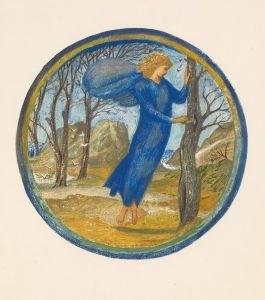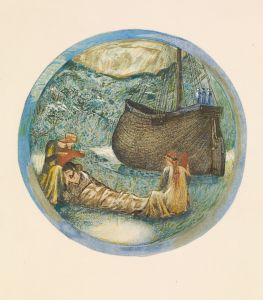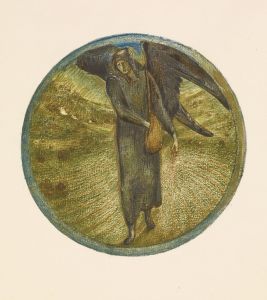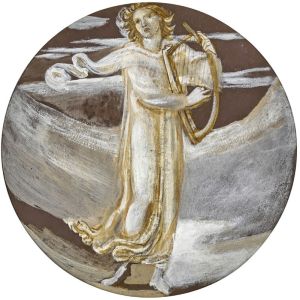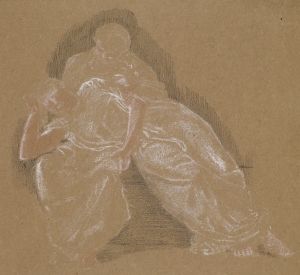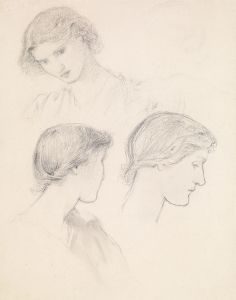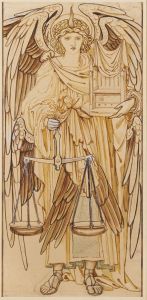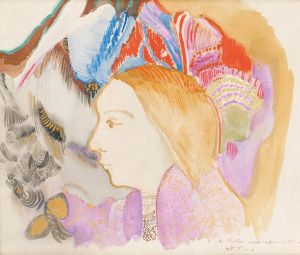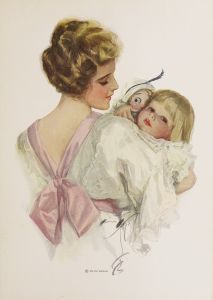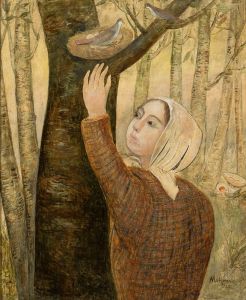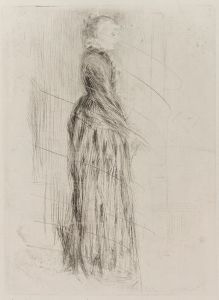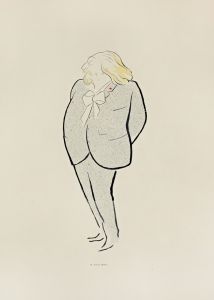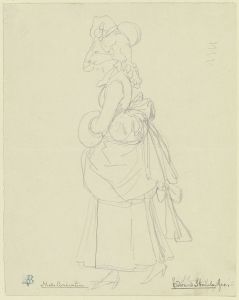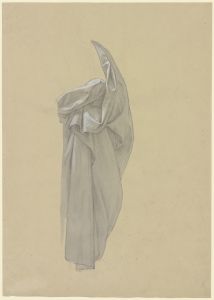
Head of a Woman
A hand-painted replica of Sir Edward Coley Burne-Jones’s masterpiece Head of a Woman, meticulously crafted by professional artists to capture the true essence of the original. Each piece is created with museum-quality canvas and rare mineral pigments, carefully painted by experienced artists with delicate brushstrokes and rich, layered colors to perfectly recreate the texture of the original artwork. Unlike machine-printed reproductions, this hand-painted version brings the painting to life, infused with the artist’s emotions and skill in every stroke. Whether for personal collection or home decoration, it instantly elevates the artistic atmosphere of any space.
"Head of a Woman" is a drawing by the British artist Sir Edward Coley Burne-Jones (1833–1898), a prominent figure in the Pre-Raphaelite movement and later the Aesthetic movement. This artwork is a study of a female head, showcasing Burne-Jones's exceptional skill in draftsmanship and his ability to capture delicate facial expressions and idealized beauty. The drawing is executed in chalk, a medium Burne-Jones frequently used for preparatory studies and standalone works.
The subject of the drawing is an unidentified woman, and the piece is believed to have been created as a preparatory study for one of Burne-Jones's larger compositions. Burne-Jones often created numerous studies of individual figures or features, such as heads, hands, or drapery, before incorporating them into his paintings or stained-glass designs. The serene and contemplative expression of the woman in this drawing reflects the artist's characteristic style, which often emphasized ethereal and otherworldly qualities.
Burne-Jones was deeply influenced by the Italian Renaissance, particularly the works of Sandro Botticelli and other Quattrocento artists. This influence is evident in the idealized features and graceful lines of "Head of a Woman." The drawing exemplifies the Pre-Raphaelite commitment to meticulous detail and a revival of medieval and early Renaissance aesthetics.
The exact date of the drawing is not definitively known, but it likely dates to the latter half of Burne-Jones's career, when he was producing some of his most celebrated works. During this period, he was associated with the decorative arts firm Morris, Marshall, Faulkner & Co., founded by his close friend and collaborator William Morris. Burne-Jones contributed designs for stained glass, tapestries, and other decorative objects, in addition to his work as a painter and draftsman.
"Head of a Woman" is held in a private collection or museum, though specific details about its current location and provenance are not widely documented. The drawing is often cited as an example of Burne-Jones's mastery of portraiture and his ability to convey a sense of timeless beauty through his art.
No further information about the context or history of this specific work is available.





